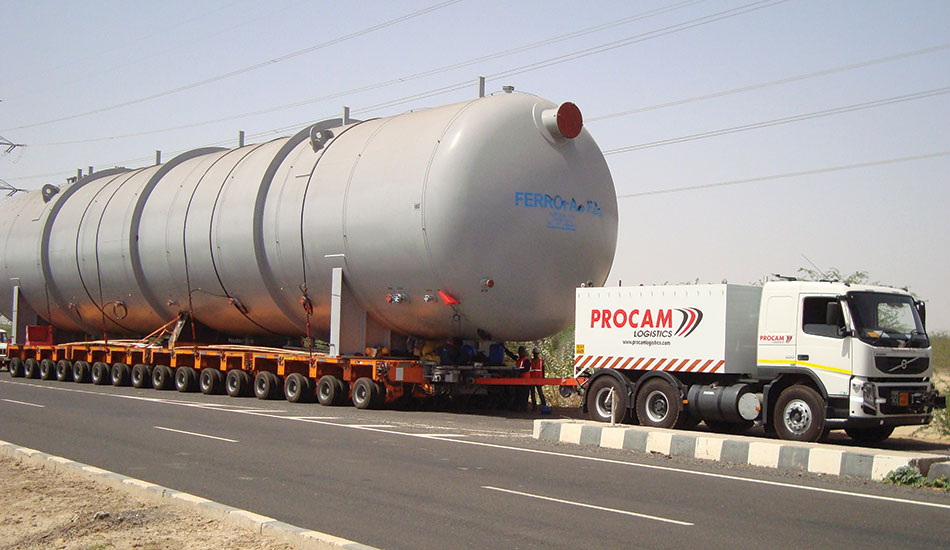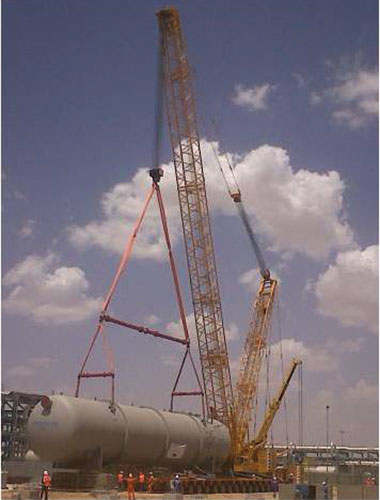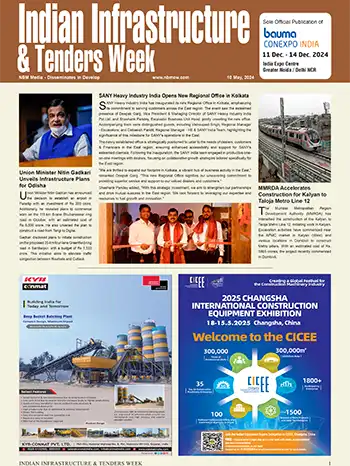Logistics Industry to grow on back of strong government support

How do you see the growth potential of the Indian Logistic industry and what positives are visible?
The Logistics industry in India is likely to grow at 9-10% over the medium-term, supported by the recent structural changes by the government by providing it industry status. The organized sector will be driven by an increase in demand due to expected economic recovery, and the trend of outsourcing non-core activities like logistics, warehousing and associated activities to integrated players.
Some of the visible positive trends in this sector are implementation of GST, increasing focus of foreign investors across the logistics value chain, growing demand for end-to-end solution providers, and emergence of new avenues such as e-commerce, logistics parks, cold chains, and new startups, all of which will also boost the industry.
Infact, the Indian Logistics industry is at a crossroads, and is poised for growth on the back of the economic recovery and changing industry dynamics. The on-line approval by the Ministry of Surface Transport to transport over-dimension cargo has reduced transit delays and increased equipment utilization.
What are the biggest issues and challenges, and how will the Government’s ambitious Sagarmala project benefit the industry?
The Indian Logistics Industry is in a transition phase, where, due to the government’s focus on it, it is seeing investor interest and entry of organized players. All of this is giving it a growth momentum. The biggest challenge, still, is to ensure seamless movement of goods across all modes of transportation. However, the cost of transportation by roadways is 65% of the freight, and a mere 26% for railways. So, a proper balance needs to be made to optimize cost and transit time.
Lack of skilled manpower in Logistics is also a bottleneck and requires suitable infrastructure and investment in skill development. As regards the regulatory aspects, there are 7 government ministries and various agencies involved in the movement of goods. A major step taken by the government was to form a Logistics division under the Ministry of Commerce to integrate regulator interface for all stakeholders. It is hoped that with the integrated IT infrastructure with a single window system and better coordination amongst the various logistics stakeholders, the ministries will give a momentum for radical growth in this sector.
The government's other major emphasis is on improving the country’s transportation mix by developing inland and coastal waterways. Presently, seaways account for a minuscule 6 percent of total freight movement in India compared to countries like China (30%) and USA (14%). Given the economic and environmental benefits, the government has chalked out the ambitious Sagarmala project that aims at doubling the share of seaways in the transport mix over the next decade by executing multiple projects for the expansion and modernization of various ports.
Further, in an attempt to improve integrated logistics, the government plans to develop about 35 strategically located multi-modal logistic parks (MMLPs), close to major manufacturing and consumption centers. These initiatives have significant potential to bring down logistics costs in the country over the medium term.

How do you rate the government’s push for ‘ease of doing business’ in this sector? What impact have you observed on your business and industry post GST?
It is very surprising that India does not have any scientific process to capture logistics cost. As per various Industry reports, it is said that the cost in India is 12-14% of GDP, but this is not validated by any government report. In order to calculate the cost of Logistics to GDP and address other key issues, in 2017, the Logistics Division was created under the Ministry of Commerce. This newly formed unit is actively working on facilitating ‘ease of doing business’ in the Logistics business.
The World Bank publishes bi-annual Logistics Performance Index (LPI), wherein India was ranked 35 among 160 countries in 2016, up from 54 in 2014. Based on similar parameters, in order to measure LPI of each Indian state, LEADS Index (Logistics Ease Across Different States) was created and it published its first report. While Gujarat topped the Logistics index chart, Punjab and Andhra Pradesh took the second and third position, respectively, and Maharashtra led in merchandise export.
The ease of doing business in Logistics is now measured through LEADS index by measuring eight parameters such as infrastructure, services, timeliness, track and trace, competitiveness of pricing, safety of cargo, operating environment, and regulatory process.
GST implementation is having a good impact in many ways to all stakeholders, but they should have the support of all organized players by consolidating the warehousing network and making a shift towards the 'hub and spoke' model. Also, a higher degree of tax compliance and a level playing field between express and traditional transport services providers by virtue of access to input tax credit.
How is Procam ensuring speedy and reliable service while maintaining high quality standards?
At Procam, our project management skill, detailed planning, innovative solutions and application of suitable equipment help to meet client expectation and makes us competitive. Our well-trained team is equipped to take up challenges to meet project deliverables with optimum resources, while adhering to the highest standard of HSE (Health, Safety, and Environment) guidelines.
As a project transport company with a pan India presence, we serve from all gateways: sea ports and airports to the hinterlands of India. We are expanding in the eastern market and investing in warehouse space. We are also investing heavily in IT infrastructure to scale up our services.
Demand for over-dimension cargo (ODC) has increased in the past few years, especially from infra and heavy engineering projects. How are you gearing up to offer specialized transport services to these sectors?
Government spending has increased substantially in the Infra sector and this has helped our core project cargo ‘transpiration’. Our engineering center in Chennai is providing back-up support to all our engineering solutions for transportation of ODC and installation of heavy equipment. Our investment in specialized equipment like 4 point lift system, modules hydraulic axles and specialized extended long trailers makes us innovative and well-prepared to meet client expectations, and this is what differentiate us from our competitors.
What is Procam’s current fleet size of equipment & vehicles and do you have plans to acquire new cranes and trailers for ODC?
We are an asset-based project transpiration and forwarding company. We have 120 hydraulic axles, 6 specialized blade trailers, 2x400T hydraulic gantry, 20 heavy pullers, and a network of associates in 120 countries. Our JV with Caparo Engineering includes a land bank of 500 acres for warehouse development, and we are managing 250,00 sqft covered and 750,000 sqft open warehouse space in India for Automotive, Rural Infrastructure, Engineering and Railway projects. We will be making major investments in warehouse infrastructure development and in specialized installation equipment this year.
Please tell us about your project management strategies and practices, giving reference of one of the most challenging and critical projects undertaken by Procam Logistics?

The biggest challenge was to deploy the trailer with the necessary length to accommodate the length and width of the cargo and ensure good stability. We were required to dismantle and re-install the 15 overhead structures for smooth transportation. We had to make 10 by-passes for the bridges declared weak and restricted for heavy load and obtain shut down and removal of 250 electrical wires of 11kv and 50 of 33kv. We had to take permission from the Gujarat and Rajasthan state governments. We had to prepare a separate approach road to the site and for locations for unloading. On reaching the site, we had to undertake unloading of the cargo onto the respective foundations using a 500-ton crane.
We conducted a detailed route survey and selection process for a suitable trailer for transportation, and put in place a contingency plan. Procam also coordinated with NHAI and RTO authorities for trouble-free movement. Mobilization of the equipment was done in the right time to meet dispatch schedule and with vehicle tracking. Procam’s operation team prepared a journey management plan and deployed an experienced operating crew for all jobs from unloading to delivery.
The client was happy to get complete updated reports of the job through regular e-mails and our vehicle tracking system. Procam enabled hassle-free movement with timely delivery to the site, without any damages, and with full HSE compliance.
Lifting & Specialized Transport — January - March 2018
Lifting & Specialized Transport January-March 2018


















